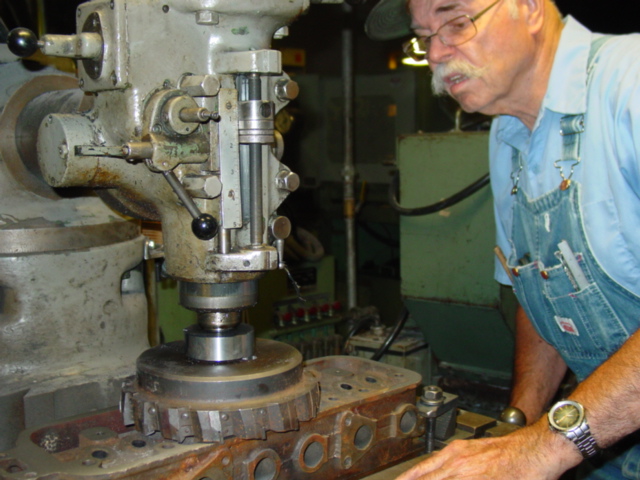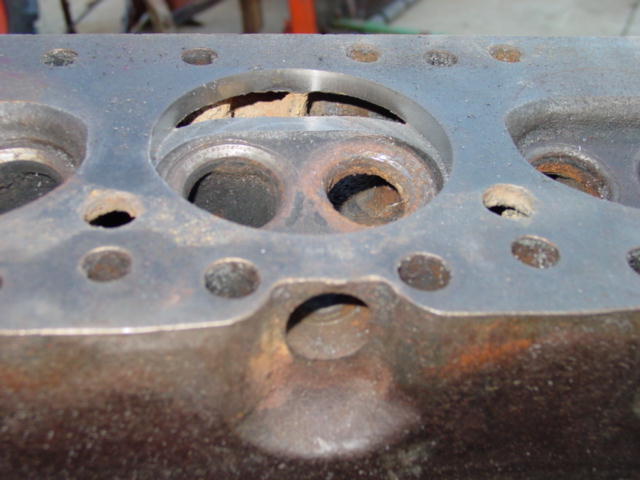| Author |
 Topic Search Topic Search  Topic Options Topic Options
|
CrestonM 
Orange Level

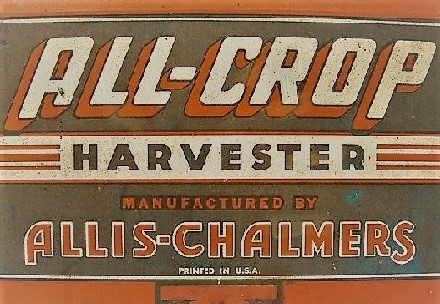
Joined: 08 Sep 2014
Location: Oklahoma
Points: 8391
|
 Post Options Post Options
 Thanks(0) Thanks(0)
 Quote Quote  Reply Reply
 Topic: Where's a CA get its power?? Topic: Where's a CA get its power??
Posted: 20 Jan 2016 at 10:23pm |
Was looking through Swinford's book. I noticed the Late B's and C's all have about the same engine info as a CA, such as bore, stroke, displacement, carb, etc..The only difference is rated RPM. CA has about 150 more RPM. Is that the only way it gets that much more power? I'm kinda confused as to why speeding up an engine would give more power. Could I speed up my B to get more power? Thanks
Edited by CrestonM - 20 Jan 2016 at 10:24pm
|
 |
|
Sponsored Links
|
|
 |
Ted in NE-OH 
Orange Level


Joined: 12 Nov 2009
Location: Austinburg OH
Points: 1703
|
 Post Options Post Options
 Thanks(0) Thanks(0)
 Quote Quote  Reply Reply
 Posted: 20 Jan 2016 at 10:25pm Posted: 20 Jan 2016 at 10:25pm |
|
Higher RPM
|
|
CA, WD, C, 3 Bs, 2 Gs, WC, I-400, 914
|
 |
SteveM C/IL 
Orange Level Access

Joined: 12 Sep 2009
Location: Shelbyville IL
Points: 8239
|
 Post Options Post Options
 Thanks(0) Thanks(0)
 Quote Quote  Reply Reply
 Posted: 20 Jan 2016 at 10:48pm Posted: 20 Jan 2016 at 10:48pm |
|
Ususally compression and rpm increase raised the hp #'s
|
 |
DaveKamp 
Orange Level Access

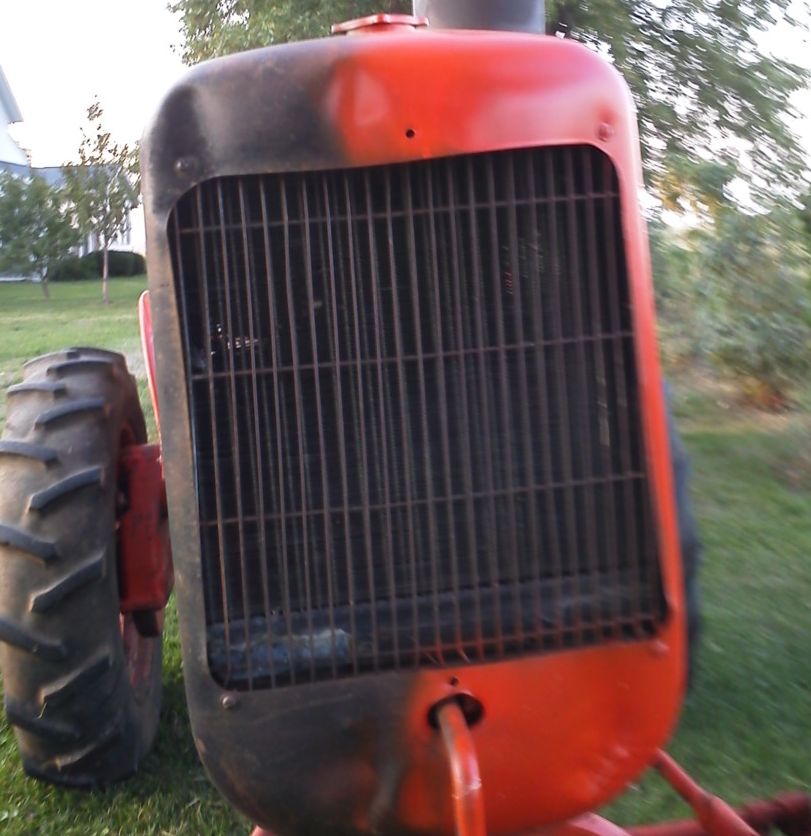
Joined: 12 Apr 2010
Location: LeClaire, Ia
Points: 5754
|
 Post Options Post Options
 Thanks(0) Thanks(0)
 Quote Quote  Reply Reply
 Posted: 20 Jan 2016 at 11:34pm Posted: 20 Jan 2016 at 11:34pm |
 CrestonM wrote: CrestonM wrote:
I'm kinda confused as to why speeding up an engine would give more power. |
Simple answer: Work, is force x distance. If you grab a 1 pound brick, and lift it one foot, you've performed one foot pound of work. If you lift the same brick up ten feet, you've done ten foot-pounds of work. Power is work x time. Let's say you make the first lift in one minute. That's one foot-pound per minute. Let's say you do that same lift ten times in one minute, that's ten foot pounds per minute. Now let's say you lift the brick ten feet in one minute... that's ten foot pounds per minute. Now let's say you do it TEN times in one minute, that's a hundred foot-pounds per minute. Now let's say that you have a B engine, with a hoisting drum on it that's exactly ONE FOOT in circumference. That's 12" / 3.14 = 3.821" diameter, and you've got a rope on it, to a pulley, and the engine was governed at 1500rpm. In one minute, that means it could lift a weight 1500 feet. Let's say the weight is 70 pounds... that means you're lifting 70 lbs 1500 feet, in one minute. 70 x 1500 = 105000 foot pounds of torque, per minute. Divide that by 5250 (a constant, for converting foot-pounds per minute, into horsepower) and you get 20hp. Now, speed the engine up to 1650, and the result is 70 x 1650 = 115500 foot-pounds per minute, or 22hp. Let's say that along with the raising of engine speed, there's also a compression increase, and there's better fuel available now (post-war), so a little more ignition advance, and a little better airflow overall, and now it can manage to pull an 83lb weight up the 1650' mineshaft in one minute... that's 83x1650 = 136950 ft-lbs/min, divide by 5250, and you have 26hp. If you got crazy and wound that engine up to twice the speed, and IF it didn't come unglued, AND it could still pull the same 83lb weight, you'd have twice the horsepower on-tap. The question is... WILL it stay together, and WILL it stay cool, and if so, for HOW LONG? Now, this is totally ENGINE BRAKE HORSEPOWER... when you put that engine in a driveline of a machine, there's friction losses, and traction and driveline limitations. A tractor that has very little ballast for it's driven wheels, will generate very little drawbar horsepower REGARDLESS of the engine driving the wheels. Likewise, if there's lots of parasitic loads (like a big alternator, hydraulic pumps for power steering, etc., and lots of gears spinning in the transmission), you'll lose lots of power to that, so not as much available at the wheels OR at the belt pulley and PTO. Does that clarify?
|
|
Ten Amendments, Ten Commandments, and one Golden Rule solve most every problem. Citrus hand-cleaner with Pumice does the rest.
|
 |
Dick L 
Orange Level


Joined: 12 Sep 2009
Location: Edon Ohio
Points: 5087
|
 Post Options Post Options
 Thanks(0) Thanks(0)
 Quote Quote  Reply Reply
 Posted: 21 Jan 2016 at 4:48am Posted: 21 Jan 2016 at 4:48am |
|
Kind like smoke and mirrors actually. The only way you can tell you have extra HP is on paper in the sales flyers. Using RPM's to measure the HP as soon as you load the tractor enough to lower the RPM's you also lower the HP. After you load the B, C, and CA to where you lower the RPM's the same you are back to piston diameter and compression for actual work. True increase in HP takes larger pistons and higher compression in simple terms.
|
 |
Johnwilson_osf 
Orange Level

Joined: 29 Jul 2012
Location: Mount Bethel PA
Points: 931
|
 Post Options Post Options
 Thanks(0) Thanks(0)
 Quote Quote  Reply Reply
 Posted: 21 Jan 2016 at 6:25am Posted: 21 Jan 2016 at 6:25am |
|
DaveKamp,
I learned something new today. High school physics class makes sense now.
John
|
|
Allis Express: Eastern PA on Rt 80
8050, 8010, 6080, 190, D14, DA 6035, AA 6690, 5650, Gleaner F2
|
 |
DaveKamp 
Orange Level Access


Joined: 12 Apr 2010
Location: LeClaire, Ia
Points: 5754
|
 Post Options Post Options
 Thanks(0) Thanks(0)
 Quote Quote  Reply Reply
 Posted: 21 Jan 2016 at 9:35am Posted: 21 Jan 2016 at 9:35am |
|
Dick's note about horsepower coming out same at same speed is correct, however, if someone is loading it down to same speed, it's because there isn't sufficient torque at that RPM, to maintain the load.
If you take two identical engines... in all respects, and have the exact same torque, and you just govern one at 150rpm LOWER than the other, then the lower-governed one will NEVER generate 'more' horsepower, because it is at a disadvantage in the TIME realm.
Work = Force * Distance
Power = Work * Time.
by changing governed speed, you're changing the TIME variable.
Here's an additional note:
Let's say you DOUBLE the engine's speed, then put a 2:1 gear reduction in place at the crank, so the hoisting sheave is turning at the SAME speed as before...
now you'll have enough power to pull TWICE the weight, at same speed, hence, twice the power.
Edited by DaveKamp - 21 Jan 2016 at 9:45am
|
|
Ten Amendments, Ten Commandments, and one Golden Rule solve most every problem. Citrus hand-cleaner with Pumice does the rest.
|
 |
Gerald J. 
Orange Level

Joined: 12 Sep 2009
Location: Hamilton Co, IA
Points: 5636
|
 Post Options Post Options
 Thanks(0) Thanks(0)
 Quote Quote  Reply Reply
 Posted: 21 Jan 2016 at 10:02am Posted: 21 Jan 2016 at 10:02am |
Lester Larsen's book on tractor testing "Farm Tractors 1950-1975" says in the text, "The new Allis-Chalmers CA tractor was similar to its Model B but developed more power, because of a higher compression ratio and increased engine rpm." I see that the tractor test data showed the CA also got better fuel economy, 10.29 hp-hr/gal vs 9.86 for the B tested that same year. Dave Kemps horsepower physics explanation is very good. In the real world an engine usually doesn't have constant torque with speed. It has a peak and the drops off at higher speeds because the manifolds, carburetor, and air cleaner air flow friction limit fuel ingestion at higher speeds and likely the carburetor tends to go lean at high air flows and then there is more mechanical friction loss at higher speeds, mostly pistons and rings and rod and main bearings. In automotive engines the torgue peaks at a lower speed than horsepower, but the makers advertise the peaks of the torque and the horsepower curves, even though often the horsepower curve peaks well above the normal engine operating speed range. That's specmanship. The beauty of Nebraska Tractor test data is that the horsepower is measured at working speeds and loads. The detailed data shows horsepower under many different operating conditions. According to Nebraska Tractor test 439 in 1950 the B had a compression ratio of 5.75:1. http://digitalcommons.unl.edu/cgi/viewcontent.cgi?article=1144&context=tractormuseumlitAccording to the test 453 the same year the CA had a compression ratio of 6.25:1 and the same sized intake and exhaust valves. http://digitalcommons.unl.edu/cgi/viewcontent.cgi?article=1157&context=tractormuseumlitGerald J.
|
 |
Dick L 
Orange Level


Joined: 12 Sep 2009
Location: Edon Ohio
Points: 5087
|
 Post Options Post Options
 Thanks(0) Thanks(0)
 Quote Quote  Reply Reply
 Posted: 21 Jan 2016 at 11:27am Posted: 21 Jan 2016 at 11:27am |
The B has a taller final drive gear which would take away fuel usage under similar loads. The heads and firing chambers are exactly the same as close to exact you can get with a casting. I have opened up these engines where the 3 3/8" piston did not come flush with the top of the sleeves. The only way the test data could show a higher compression would be to compare the shorter piston in the B and the taller piston in the CA.
I loved my CA's for plowing with the snap coupler plow but the data used to sell the tractors with higher HP and compression was smoke and mirrors. In saying so I am not downing the tractor one bit. It was a big improvement over the C.
With the crankshaft having the same stroke and the heads being the same you are left with different pistons to change compression. I never opened up a newer B of the years the CA's were built to know for sure what piston the B was shipped with.
I still have about a dozen heads from these engines from the older B's to the CA's and your welcome to come and measure them at any time. The first thing I do to the heads when rebuilding them is to remove material to increase the compression with this cutter.
|
 |
wfmurray 
Orange Level

Joined: 13 Sep 2009
Location: Bostic NC
Points: 1225
|
 Post Options Post Options
 Thanks(0) Thanks(0)
 Quote Quote  Reply Reply
 Posted: 21 Jan 2016 at 1:10pm Posted: 21 Jan 2016 at 1:10pm |
|
I have a B and I got a Ca gov spring decided not to put it on just give more rpm .If you turn 1650 instead of 1400 and run the same ground speed the 1650 will be stronger because the ratio will be higher.More engine turns to the wheels one. Pretty simple . Speed up a B and you just get more RPMs and faster ground speed.
|
 |
CrestonM 
Orange Level


Joined: 08 Sep 2014
Location: Oklahoma
Points: 8391
|
 Post Options Post Options
 Thanks(0) Thanks(0)
 Quote Quote  Reply Reply
 Posted: 21 Jan 2016 at 2:09pm Posted: 21 Jan 2016 at 2:09pm |
|
So I can't get more power from the B just by speeding it up, I need the taller pistons to get a higher compression ratio?
Thanks
|
 |
Gerald J. 
Orange Level

Joined: 12 Sep 2009
Location: Hamilton Co, IA
Points: 5636
|
 Post Options Post Options
 Thanks(0) Thanks(0)
 Quote Quote  Reply Reply
 Posted: 21 Jan 2016 at 2:23pm Posted: 21 Jan 2016 at 2:23pm |
|
You will get some more power running the B engine faster, but not as much as running it faster and adding the taller pistons. You can gain more if the B was dual fuel because it came with lower compression ratio for distillate fuel. Books say there were two compression ratio options for the B and C for the different fuels.
Compression ratio has two effects, one is a bigger bang pressure after ignition with a higher compression ratio and the other is the amount of expansion used from that explosion. A diesel tends to have greater output for a given amount of fuel because of the high compression needed for compression ignition also allows for greater expansion. In a steam engine efficiency is increased by closing the intake valve early in the stroke and getting more expansion from the steam. That's also true in Prius gas engines. Their valves are set up to have a 15:1 or so expansion ratio with a 9 or 10:1 effective compression ratio. That makes for greater engine efficiency. Too high a compression ratio leads to pinging in a gas engine and that hurts engine efficiency. It also leads to a high combustion temperature and that causes greater nitrous oxide emissions.
Gerald J.
Edited by Gerald J. - 21 Jan 2016 at 2:32pm
|
 |
CrestonM 
Orange Level


Joined: 08 Sep 2014
Location: Oklahoma
Points: 8391
|
 Post Options Post Options
 Thanks(1) Thanks(1)
 Quote Quote  Reply Reply
 Posted: 21 Jan 2016 at 2:30pm Posted: 21 Jan 2016 at 2:30pm |
|
Mine is dual fuel, although I only run it on gas. It has the K at the end of the serial number, as well as the small tank under the hood for gasoline. (And the big tank for kero)
|
 |
Brian Jasper co. Ia 
Orange Level

Joined: 11 Sep 2009
Location: Prairie City Ia
Points: 10508
|
 Post Options Post Options
 Thanks(0) Thanks(0)
 Quote Quote  Reply Reply
 Posted: 21 Jan 2016 at 4:57pm Posted: 21 Jan 2016 at 4:57pm |
 Dick L wrote: Dick L wrote:
The B has a taller final drive gear which would take away fuel usage under similar loads. The heads and firing chambers are exactly the same as close to exact you can get with a casting. I have opened up these engines where the 3 3/8" piston did not come flush with the top of the sleeves. The only way the test data could show a higher compression would be to compare the shorter piston in the B and the taller piston in the CA.
I loved my CA's for plowing with the snap coupler plow but the data used to sell the tractors with higher HP and compression was smoke and mirrors. In saying so I am not downing the tractor one bit. It was a big improvement over the C.
With the crankshaft having the same stroke and the heads being the same you are left with different pistons to change compression. I never opened up a newer B of the years the CA's were built to know for sure what piston the B was shipped with.
I still have about a dozen heads from these engines from the older B's to the CA's and your welcome to come and measure them at any time. The first thing I do to the heads when rebuilding them is to remove material to increase the compression with this cutter.
|
I always wondered about that Dick. Just out of curiosity, how much can you take off a B C CA head to bump compression? I know nearly 20 years ago I should have had new seats installed but didn't have the funds back then. Kinda got the itch to redo it right.
|
|
"Any man who thinks he can be happy and prosperous by letting the government take care of him better take a closer look at the American Indian." Henry Ford
|
 |
CTuckerNWIL 
Orange Level

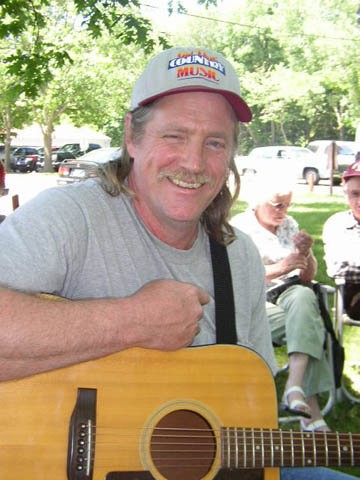
Joined: 11 Sep 2009
Location: NW Illinois
Points: 22823
|
 Post Options Post Options
 Thanks(0) Thanks(0)
 Quote Quote  Reply Reply
 Posted: 21 Jan 2016 at 5:23pm Posted: 21 Jan 2016 at 5:23pm |
 CrestonM wrote: CrestonM wrote:
Mine is dual fuel, although I only run it on gas. It has the K at the end of the serial number, as well as the small tank under the hood for gasoline. (And the big tank for kero) |
Having a K engine number doesn't necessarily mean you can get more power by changing pistons. It may already have been rebuilt with later pistons. A GOOD compression check will help tell if any work would bring it up in HP.
|
|
|
 |
Dick L 
Orange Level


Joined: 12 Sep 2009
Location: Edon Ohio
Points: 5087
|
 Post Options Post Options
 Thanks(0) Thanks(0)
 Quote Quote  Reply Reply
 Posted: 21 Jan 2016 at 5:24pm Posted: 21 Jan 2016 at 5:24pm |
By slicing and dicing I found you can remove over .200. I hate guessing and taking other peoples opinions on what can be done or can't so I use the tools I have to find out. I have only removed .200 on one head used on one of my pulling tractors. It didn't cause any run problems. It was real hard to hand crank when I had to remove the battery to make weight. I have done several at .150 which I could hand crank back when I was pulling. I would have a problem hand cranking one now with all the spark plugs out.
.050 will make a difference you can feel and hear.
This one has .050 removed.
Edited by Dick L - 21 Jan 2016 at 5:33pm
|
 |
CrestonM 
Orange Level


Joined: 08 Sep 2014
Location: Oklahoma
Points: 8391
|
 Post Options Post Options
 Thanks(0) Thanks(0)
 Quote Quote  Reply Reply
 Posted: 21 Jan 2016 at 5:38pm Posted: 21 Jan 2016 at 5:38pm |
So I can take my head to a machine shop and have them take .200 off the head? If they mess up, I have another bare head from a B.
Charlie...what defines a good compression check? Thanks
|
 |
CTuckerNWIL 
Orange Level


Joined: 11 Sep 2009
Location: NW Illinois
Points: 22823
|
 Post Options Post Options
 Thanks(0) Thanks(0)
 Quote Quote  Reply Reply
 Posted: 21 Jan 2016 at 5:46pm Posted: 21 Jan 2016 at 5:46pm |
|
If you tell them to cut .200 off and somebody has already milled the head once, you could have a boat anchor that will still have to be paid for.
I would guess, if you have 90+ in each cylinder, it ain't a K engine anymore.
|
|
|
 |
CrestonM 
Orange Level


Joined: 08 Sep 2014
Location: Oklahoma
Points: 8391
|
 Post Options Post Options
 Thanks(0) Thanks(0)
 Quote Quote  Reply Reply
 Posted: 21 Jan 2016 at 5:47pm Posted: 21 Jan 2016 at 5:47pm |
It has 80 lbs give or take a few pounds. How do I tell if it's already been milled?
|
 |
Dick L 
Orange Level


Joined: 12 Sep 2009
Location: Edon Ohio
Points: 5087
|
 Post Options Post Options
 Thanks(0) Thanks(0)
 Quote Quote  Reply Reply
 Posted: 21 Jan 2016 at 6:48pm Posted: 21 Jan 2016 at 6:48pm |
 CrestonM wrote: CrestonM wrote:
So I can take my head to a machine shop and have them take .200 off the head? If they mess up, I have another bare head from a B.
Charlie...what defines a good compression check? Thanks |
A word of caution!
You might not want to take .200 off if you are not doing the bottom end. I was building a hot engine and when I got done I had a lot of money in it. Everything was new and modified by an engine builder. Rods were reconditioned to not need shims and everything was balanced. I did my own head and engine assembly.
The compression values you listed is not that bad for a well used engine. Your valves may or may not be the determining factor in your compression values. You could remove material from the head and not get much of an increase with more going past the rings.
The only way I would know if you needed a complete rebuild would be to disassemble the engine and measure all parts.
|
 |
norm[ind] 
Orange Level

Joined: 29 Oct 2010
Location: bourbon,ind
Points: 2992
|
 Post Options Post Options
 Thanks(0) Thanks(0)
![Quote norm[ind] Quote norm[ind]](forum_images/quote.png) Quote Quote  Reply Reply
 Posted: 21 Jan 2016 at 7:06pm Posted: 21 Jan 2016 at 7:06pm |
|
you are forgettig another thing---going from a 3sp. toa 4sp. tranny also
|
 |
Dick L 
Orange Level


Joined: 12 Sep 2009
Location: Edon Ohio
Points: 5087
|
 Post Options Post Options
 Thanks(0) Thanks(0)
 Quote Quote  Reply Reply
 Posted: 21 Jan 2016 at 7:11pm Posted: 21 Jan 2016 at 7:11pm |
 CrestonM wrote: CrestonM wrote:
It has 80 lbs give or take a few pounds. How do I tell if it's already been milled? |
When you are going to max out the amount you can remove it is all about how much is left when done. Take notice of my cutaway picture as to what you have to work with. If you have a weak stomach you will leave more than less material thickness over the water jacket. Thinner cast cracks easier than thicker cast. Measure the thickness down in one of the water holes.
|
 |
Rick143 
Orange Level


Joined: 13 Dec 2015
Location: Lomira, WI
Points: 247
|
 Post Options Post Options
 Thanks(0) Thanks(0)
 Quote Quote  Reply Reply
 Posted: 21 Jan 2016 at 8:53pm Posted: 21 Jan 2016 at 8:53pm |
|
If you raise the compression with rebuilding the bottom end it's common to start burning oil. I have seen this enough sometimes a valve job on a worn engine can cause this. Also raising the RPM without taking ridge out of the sleeves can brake a ring.
|
 |
Dick L 
Orange Level


Joined: 12 Sep 2009
Location: Edon Ohio
Points: 5087
|
 Post Options Post Options
 Thanks(0) Thanks(0)
 Quote Quote  Reply Reply
 Posted: 21 Jan 2016 at 8:59pm Posted: 21 Jan 2016 at 8:59pm |
 norm[ind wrote: norm[ind wrote:
] you are forgettig another thing---going from a 3sp. toa 4sp. tranny also |
Your correct !
|
 |
DrAllis 
Orange Level Access

Joined: 12 Sep 2009
Points: 20494
|
 Post Options Post Options
 Thanks(0) Thanks(0)
 Quote Quote  Reply Reply
 Posted: 21 Jan 2016 at 9:56pm Posted: 21 Jan 2016 at 9:56pm |
|
A WD-45 engine (W-226) produced 57 flywheel HP @ 1650 RPM. A D-17 engine (G-226) produced 63 HP @ 1650 RPM. Compression was 130 psi on the WD-45. Compression on a D-17 was 145 psi.......A 15 psi increase in compression was 6 flywheel HP.
|
 |
PaulB 
Orange Level

Joined: 12 Sep 2009
Location: Rocky Ridge Md
Points: 4736
|
 Post Options Post Options
 Thanks(0) Thanks(0)
 Quote Quote  Reply Reply
 Posted: 23 Jan 2016 at 7:31am Posted: 23 Jan 2016 at 7:31am |
|
When planing a head you may never know what has been done to it in the past. I've only ever had one head that was NOS and known to be a casting that had never been touched. I did the same a DickL and sawed through one to see what could be done. I determined the the spark plug holes were the key; just leave a minor amount of material at the large bore of the spark plug hole to be sure you can install the plugs without interfence.
|
|
If it was fun to pull in LOW gear, I could have a John Deere.
Real pullers don't have speed limits.
If you can't make it GO... make it SHINY
|
 |
CrestonM 
Orange Level


Joined: 08 Sep 2014
Location: Oklahoma
Points: 8391
|
 Post Options Post Options
 Thanks(0) Thanks(0)
 Quote Quote  Reply Reply
 Posted: 23 Jan 2016 at 10:49am Posted: 23 Jan 2016 at 10:49am |
 Rick143 wrote: Rick143 wrote:
If you raise the compression with rebuilding the bottom end it's common to start burning oil. I have seen this enough sometimes a valve job on a worn engine can cause this. Also raising the RPM without taking ridge out of the sleeves can brake a ring. |
Define the bottom end. Is that just the crankshaft and it's bearings, or is it everything from the pistons down? Thanks
|
 |
CrestonM 
Orange Level


Joined: 08 Sep 2014
Location: Oklahoma
Points: 8391
|
 Post Options Post Options
 Thanks(0) Thanks(0)
 Quote Quote  Reply Reply
 Posted: 23 Jan 2016 at 10:50am Posted: 23 Jan 2016 at 10:50am |
 PaulB wrote: PaulB wrote:
I determined the the spark plug holes were the key; just leave a minor amount of material at the large bore of the spark plug hole to be sure you can install the plugs without interfence. |
Can you further elaborate on this? I'm not sure I understand what you mean.
|
 |
Chalmersbob 
Orange Level

Joined: 11 Sep 2009
Location: Pennsylvania
Points: 2122
|
 Post Options Post Options
 Thanks(0) Thanks(0)
 Quote Quote  Reply Reply
 Posted: 23 Jan 2016 at 11:38pm Posted: 23 Jan 2016 at 11:38pm |
|
I had a surprise this past fall. I just finished rebuilding a C and decided to hook it to my 6'offset disk. I always used the CA to pull this disk and was doubtful if the C could do it. Well I was shocked. The C pulled it better then the CA. The CA always scratched when turning at the end of the field. The C just took the turns in stride. Bob
|
|
4 B's, 1 C's,3 CA's, 2 G's WD, D14, D15, B-1, B10, B12, 712S,
|
 |
sandman2234 
Orange Level

Joined: 21 Feb 2013
Location: Jax
Points: 2547
|
 Post Options Post Options
 Thanks(0) Thanks(0)
 Quote Quote  Reply Reply
 Posted: 24 Jan 2016 at 8:56am Posted: 24 Jan 2016 at 8:56am |
|
Dick and Norm both touched on the transmission, thought I would bring it to light just a little.
Only considering low gear, since that is where the most pull is attained, although at a lower speed, the B has a 2.5 mile per hour road speed. The CA has a 2.0 mile per hour road speed.
Now, considering the fact that the CA has a higher engine rpm, something has been changed, which could be the actual low gear in the transmission or a combination of the transmission low gear and the output gears in the finals. This should equate to the better pulling power that many have described.
From experience while looking for an exact tooth count on a final gear for Hubnut, I figured out that there are several different bull gear combinations, so some of them might be used to attain this "added horsepower". However, since an overall road speed increase is also attained, and an extra gear, I would guess most of the changes that made a serious difference would be found in the CA transmission.
As far as decking a head on a B to up the compression ratio, I would be really hesitant to do this on an engine that was also not getting the bottom end done at the same time. If the engine has sufficient wear to need the top end done, adding the additional compression to a weakened bottom end might bring about results that aren't what you weren't hoping for. Just my 2 cents.
David from jax
|
|
A proud member of the Allis Express movement!
Northeast Florida
|
 |









 Topic Options
Topic Options


 Post Options
Post Options Thanks(0)
Thanks(0)



 CrestonM wrote:
CrestonM wrote:
